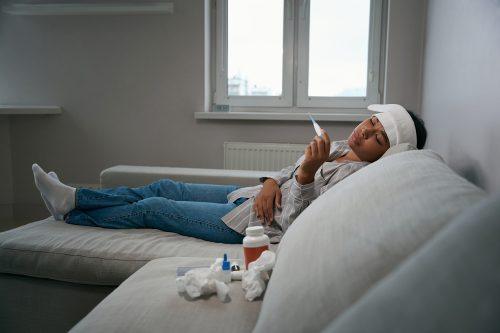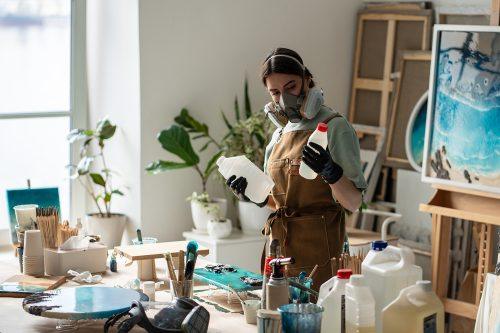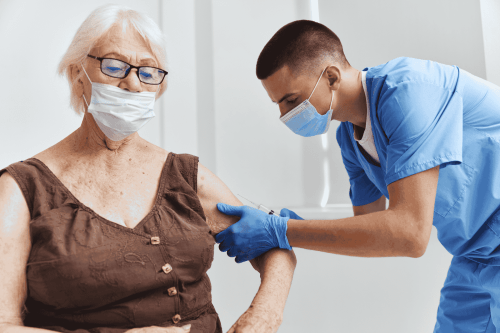Every provider knows that patient safety is a top priority within hospital walls or clinic settings. But what about when patients return home? The reality is that many adverse events—falls, medication errors, infections—don’t happen in a controlled medical environment. They happen in everyday spaces like living rooms, bathrooms, and kitchens.
According to a 2023 study published in the Journal of Aging and Health, there were more than 318,000 emergency department visits, 290,000 hospitalizations, and over 7,700 deaths related to hip fractures among older adults in 2019. Numbers like these highlight just how serious the risks can be when safety hazards at home go unaddressed.
While providers often educate patients on care plans and medication, home hazards can easily be overlooked. These risks don’t just threaten safety—they can also lead to emergency room visits, hospital readmissions, and long-term complications. For healthcare providers, understanding and addressing these hazards is critical to ensuring continuity of care and better outcomes.
Why Home Hazards Are Easy to Miss
Healthcare professionals are experts in diagnosing, treating, and guiding patients through medical conditions. But patients’ homes are complex, uncontrolled environments. Unlike a hospital, there’s no infection control team, maintenance crew, or safety officer monitoring every detail.
A few reasons why hazards slip through the cracks:
- Patients normalize risks. A loose rug or cluttered stairway might seem “normal” to a patient who has lived with it for years.
- Limited visibility. Providers may not see the home environment firsthand, relying only on patient reports.
- Shifting focus. Discussions often center on medications or follow-up visits, not fall hazards or fire safety.
The good news? By raising awareness and encouraging simple safety checks, providers can make a big impact on patient wellbeing at home.
The Top Overlooked Home Hazards
Here are some of the most common risks providers should keep on their radar:
Loose Rugs and Cluttered Pathways
Falls remain one of the leading causes of injury among older adults. Something as simple as a loose throw rug, electrical cords across the floor, or stacks of clutter can create dangerous trip hazards.
Provider Tip: Encourage patients and caregivers to clear walkways, secure rugs with non-slip backing, and keep commonly used items within easy reach.
Poor Lighting
Dim hallways, staircases, and bathrooms increase fall risks—especially for patients with vision impairments.
Provider Tip: Recommend brighter bulbs, night lights in hallways, and motion-sensor lighting in high-traffic areas.
Medication Mismanagement

Medications are often stored unsafely or organized poorly. This can lead to missed doses, overdoses, or dangerous drug interactions.
Provider Tip: Suggest pill organizers, clear labeling, and regular medication reviews. If caregivers are involved, stress the importance of consistent communication.
Unsafe Bathrooms
Slippery floors, lack of grab bars, and low toilet seats are frequent culprits for accidents.
Provider Tip: Recommend non-slip mats, grab bars in showers, and raised toilet seats for patients with mobility challenges.
Fire and Burn Risks
Space heaters near curtains, unattended stoves, or overloaded power strips put patients—especially those with cognitive decline—at serious risk.
Provider Tip: Remind patients and families to check smoke detectors, avoid space heater misuse, and practice safe cooking habits.
Unsecured Medical Equipment
Home oxygen tanks, IV poles, or mobility aids like walkers can become hazards if not stored or maintained properly.
Provider Tip: Instruct patients on safe placement and regular inspection of equipment. Ensure cords and tubing aren’t blocking walkways.
Pets and Small Children
Beloved pets or visiting grandchildren can unintentionally create risks by leaving toys, food bowls, or simply being underfoot.
Provider Tip: Encourage families to plan for safe zones where patients can move freely without obstruction.
Poor Air Quality and Ventilation

Dust, mold, or improper ventilation may worsen chronic conditions like asthma or COPD.
Provider Tip: Advise regular filter changes, safe use of humidifiers, and avoidance of smoking indoors.
Improper Food Storage
Expired foods or improper refrigeration can cause foodborne illness—particularly dangerous for immunocompromised patients.
Provider Tip: Encourage patients or caregivers to routinely check expiration dates and maintain proper storage.
Stair Safety Issues
Steep steps without handrails or uneven surfaces are a major fall risk.
Provider Tip: Recommend sturdy handrails on both sides of staircases and proper footwear for patients navigating stairs.
Why These Home Hazards Matter for Providers
You might wonder: Why should healthcare providers focus on hazards outside the clinic? Here’s why it matters:
- Preventing Readmissions. Many falls and medication errors lead to costly hospital readmissions. Prevention at home keeps patients healthier and reduces system strain.
- Improving Quality Metrics. Patient safety directly influences value-based care measures and reimbursement models.
- Strengthening Trust. When providers go beyond “just clinical care” and show concern for daily safety, it strengthens patient-provider relationships.
- Reducing Liability. Identifying risks early lowers the chance of accidents tied to provider oversight.
Practical Ways Providers Can Help
Providers don’t need to do full-scale home assessments to make a difference. Here are simple steps to integrate into patient interactions:
- Ask the Right Questions. “Do you feel safe moving around your home?” or “Have you had any near-falls?” can open the door to discussing hazards.
- Encourage Caregiver Involvement. Share safety tips directly with family members or caregivers.
- Use Educational Handouts. Provide easy-to-read checklists patients can take home.
- Leverage Technology. Recommend telehealth check-ins or virtual tours for patients at high risk.
- Partner with Specialists. Collaborate with occupational therapists or home health agencies for detailed assessments when needed.
Beyond Prevention: Empowering Patients
Ultimately, safety isn’t about eliminating independence—it’s about empowering patients to live confidently at home. Simple changes can prevent serious injuries while allowing patients to maintain autonomy.
When providers highlight overlooked hazards, patients feel supported not only in their medical care but also in their daily lives. That’s a win-win: better outcomes for patients, and fewer preventable complications for providers to manage.
Conclusion: Small Fixes, Big Impact
Healthcare doesn’t end when a patient leaves the clinic. Many of the risks patients face exist in the places they feel most comfortable—their own homes. By addressing overlooked hazards, providers can prevent injuries, improve the quality of care, and protect patients from avoidable harm.
A safer home means a healthier patient—and fewer preventable setbacks for providers.
Ensure compliance, boost efficiency, and foster patient trust with AMC. Enroll your large team in our customized, free course development program today, and equip them with the knowledge to deliver safer, smarter, and more effective care.



